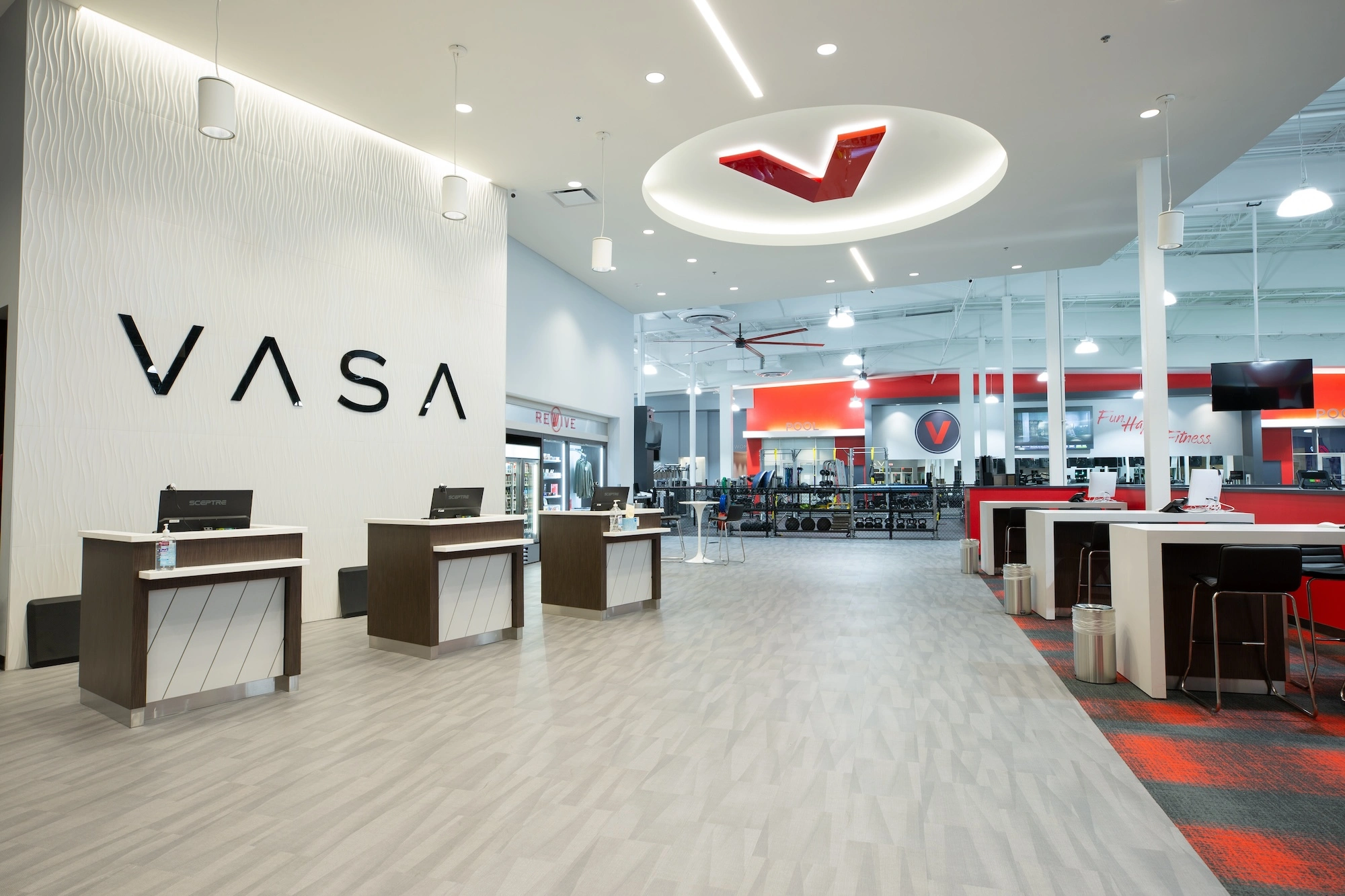Under Nelsen, Vasa has become one of America’s top low-price gym brands, currently operating 61 locations in eight states
Few gym brands are as hot as Vasa Fitness, which has quickly emerged as a serious competitor to low-price giants like Planet Fitness, Crunch Fitness and the like.
The Orem, Utah-based Vasa has taken the high-value, low-price (HVLP) gym world by storm since its founding in 2014, expanding to 61 locations in eight states across the Midwest and Mountain West, with ambitious plans for further expansion.
The man behind much of that growth is Rich Nelsen, the CEO of Vasa Fitness who took that position in 2018 after stints at Starbucks and In-Shape Health Clubs (now In-Shape Family Fitness).
Under Nelsen, Vasa has been certified multiple times as a Great Place to Work, has added Studio, a new boutique fitness-style offering, and has built out its executive team with industry-leading talent.
Nelsen sat down with Athletech News to discuss his first six years at the helm of Vasa, give his thoughts on the future of the HVLP gym industry and share some details on Vasa’s expansion strategy in the years ahead.
The following conversation has been lightly edited for clarity and length.
Athletech News: Can you tell us about your background and why you decided to join Vasa Fitness as its CEO in 2018?
Rich Nelsen: I left Starbucks in 2016 after a pretty good career there. I ran most of the middle part of the U.S. for a bit of a time, then I ran Europe and the Middle East for two and a half years, then Latin and South America for the balance of my time. I essentially learned Starbucks’ business from the ground up and then spread that knowledge and experience across many franchisees all over the world, in 54 countries.
I said I’d never leave Starbucks unless I could be the CEO of a fitness brand. And so it happened – I moved to California to become part of (In-Shape Health Clubs). I was lucky to have a lot of people surrounding me who knew the industry well, and I was able to bring the Starbucks experience to life through a fitness brand.
Then I got connected with Vasa and Silver Oak (Services Partners), our current private equity partner, who asked me if I’d like to move back home to Denver, Colorado, to expand the brand. The rest is history.
ATN: What did you bring to the fitness industry from your time at Starbucks?
RN: Understanding the customer. One of the things Starbucks is known for is really knowing customer behaviors. Running two international markets, I learned that while customers are all the same, they’re also very different in terms of how they consume the product, experience the product and experience customer service.
The fitness industry was very slow to evolve. Other than the $9.99 (monthly membership) price point, not much was evolving six years or eight years ago. It’s evolving now as the consumer becomes more demanding and has higher expectations. We’re here to solve some of those problems.
ATN: Take us back to 2018 when you started at Vasa. What were your early priorities for the brand?
RN: First of all, we’re a company founded in Utah and primarily based in Utah. We had aspirations to grow outside of Utah, and so we had to understand the consumer in Utah but also the consumer in other surrounding states that we wanted to do business in, and learn to professionalize the brand so that it would be approachable (there).
Number two was professionalizing the organization. We were a small company with 23 locations, growing one (gym) at a time – we wanted to grow eight to 10 at a time, so we had to professionalize everything from accounting to fitness to marketing. It was a combination of leveraging the strengths internally of the organization – people who had been there a long time – and bringing some new thought leaders into the organization to leverage their skills.
ATN: Vasa has expanded quickly over the last few years, now counting 61 gyms. What separates Vasa from other HVLP gym brands?
RN:I think we built an employee culture that is second to none. It’s the third year that we’ve been certified by Great Place to Work, and if you talk to the people in the organization, we all believe we can be better than we even are today. That energy translates to our members, and it’s why we treat our members better than anyone else. We believe we have the highest usage rates in the industry. In an industry where not everybody wants you to come to the gym, our brand lives off the energy of people actually visiting. We know our retention success is largely attributed to people actually using the gym.
We also think our extra amenities have added a great deal of value. We created Studio almost seven years ago on the belief that we could do boutique fitness for HVLP inside of our gym. We have over 1,000 members per club (using) our Studio product currently. So we’ve sort of become the mall of fitness, if you will. We have your basic Gap store, we have your Abercrombie store, and then we have Tiffany – Tiffany is probably a stretch, because we’re $44, but you get my point.

The third thing is we professionalize marketing, so we begin to talk to our consumers in a different way about how the brand could change their daily lives, as opposed to, “Hey, we’re here to sell $9.99 (memberships).”
ATN: How has the gym floor evolved at Vasa over your six years as CEO, particularly since the pandemic?
RN: We already talked about Studio, so I won’t keep beating that drum. You have a trend going on right now with strength (training) amongst men and women. You’ll see changes in our equipment, with more lower-body lifting equipment and more free weights as opposed to machines. Our new clubs average somewhere between eight and 10 Olympic platforms per club. We were the first to start that and now you see other people doing it. We studied where the trends were in college students seven years ago, and we started adding platforms back then.
We (also) started taking out racquetball to (add) Studio. And cycling has slowed quite a bit via the pandemic – people bought cycles at home or bought bicycles to ride, so classes aren’t as popular as they once were.
ATN: How do you think HVLP gyms might continue to evolve over the next few years?
RN: I think it’s going to be more individual and more customized. We’re going to need to create spaces inside the gym where it feels like you’re a part of something even bigger. Studio is our way of currently articulating that – you can become part of Studio, you have your friends in the Studio community, you might go to (traditional) group fitness and be part of that community, and then you might be on the free-weight floor as a part of that community.

ATN: Vasa is corporate-owned, which is a different model than most of your HVLP gym competitors who sell franchise licenses. What’s behind this decision?
RN: I get this question all the time from people who want to franchise. I would just say, we’re in the journey of the brand where we want to control the outcome, and we’re building a brand not opening gyms. Right now, I don’t feel comfortable letting somebody else be in control of the execution behind that.
(Franchising) certainly could be a possibility when we feel like we’ve nailed the execution of the brand and have the ability to share that with others. Today, we’re not ready.
ATN: Vasa has already expanded quite a bit across the Midwest and Mountain West, with gyms in eight states. What are your expansion goals over the next few years?
We could grow to as many as 100 units in five years. We have the current capacity to grow 20 units a year. I think you could look anywhere in the U.S. where a state doesn’t touch the ocean and you could see a Vasa there. We’re going to be primarily Mountain West to Midwest, getting closer to the East Coast. We have LOIs in several states from here to there.
ATN: Why does Vasa prefer to stay away from the coasts right now?
RN: We do incredibly well in the Midwest states. Our brand is regenerating communities that have been left behind. We don’t want to change our pricing strategy to not be uniform. One day, we may. Also, I don’t want to get into politics, but it’s more complicated to do business in those states.












